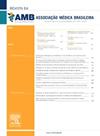Comprehensive assessment model for patients with spinal muscular atrophy: proposal of tools for clinical practice and real-world studies.
IF 1.3
4区 医学
Q2 MEDICINE, GENERAL & INTERNAL
引用次数: 0
Abstract
Spinal muscular atrophy (SMA) is a rare genetic condition, with an incidence of 10 per 100,000 live births, in which an autosomal recessive alteration occurs in the motor neuron survival gene SMN1, leading to hypotonia, progressive weakness, developmental damage, and motor losses1. It is a condition with great variability in presentation and clinical course, classified into four types from I to IV based on the age of onset of symptoms and maximum motor function reached, with type I, with childhood onset, being the most severe and type IV, with late onset, having a better prognosis. Type I SMA affects infants before 6 months of age, impairs the acquisition of motor milestones, and reduces life expectancy1. The severity of the disease and its limitations are related to complications of the respiratory, musculoskeletal, cardiovascular, and gastrointestinal systems2,3. Advances in elucidating the molecular, cellular, and physiological processes of disease have allowed innovative studies with disease-modifying therapies, in combination with interdisciplinary care, that demonstrated promising results in clinical trials and real-world studies1-3. Among the three alternatives approved as disease-modifying therapies, Nusinersen, an antisense oligonucleotide, increases the production of the motor neuron survival protein by acting on the inclusion of exon 7 in the mRNA transcripts of the SMN2 gene. It is a medication applied via intrathecal administration with four loading doses on days 0, 14, 28, and 63 and reinforcement every 4 months1,4. Safety and efficacy research and real-world studies demonstrate positive results and suggest new phenotypes1. However, differences in study methodologies in different countries may limit of results and indicate the need for greater standardization in evaluation4. The interpretation of real gains of the patients is impaired by the heterogeneity of the studies, different periods of data collection, and duration of follow-up, as well as by the use of different outcome measures and poor description of quality of life, respiratory, and nutritional outcomes1. A recent systematic review shows an important gap in the follow-up data of the therapeutic program of children with SMA I and highlights the need for new studies with independent publication, without conflicts of interest, that reinforce the long-term stabilization of results, functional abilities acquired, and additional characteristics of patients and multidisciplinary therapies4. As it is an expensive drug, such data and information reaffirm its costeffectiveness and guarantee the treatment. In Brazil, the drug was incorporated in 2019 for patients with SMA I. The new Clinical and Therapeutic Protocol, approved in January 2022, brings recommendations for the analysis of clinical effectiveness, including the use of the Children’s Hospital of Philadelphia Infant Test of Neuromuscular Disorders (CHOP INTEND)5, Hammersmith Infant Neurological Exam-Part 2 (HINE-2)6, and Expanded Hammersmith Functional Motor Scale (HFMSE)7, and also the evaluation of time/modality ventilation, invasive or noninvasive (NIV), oral or alternative feeding, and anthropometric measurements8. There is a lack of scientific publications about Brazilian patients undergoing treatment. One study showed an increase in the CHOP INTEND score of more than 70% of the 21 patients using Nusinersen and the acquisition of new motor steps by 28% of them (cervical control and acquisition of sitting), and also reported a reduction in NIV time, corroborating data from international publications and contrasting with脊髓性肌萎缩症患者的综合评估模型:用于临床实践和现实世界研究的工具建议。
本文章由计算机程序翻译,如有差异,请以英文原文为准。
求助全文
约1分钟内获得全文
求助全文
来源期刊
CiteScore
2.20
自引率
0.00%
发文量
276
审稿时长
12 weeks
期刊介绍:
A Revista da Associação Médica Brasileira (RAMB), editada pela Associação Médica Brasileira, desde 1954, tem por objetivo publicar artigos que contribuam para o conhecimento médico.

 求助内容:
求助内容: 应助结果提醒方式:
应助结果提醒方式:


